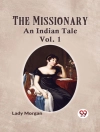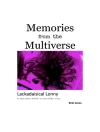The Great Gatsby (1925) is a novel by F. Scott Fitzgerald. Published at the height of Fitzgerald’s career as a leading writer of American fiction, The Great Gatsby was reviewed poorly by contemporary critics, but has since been recognized as a groundbreaking work for its vision of American decadence and decay. Adapted into several influential films and adored by generations of readers and writers, The Great Gatsby is not only Fitzgerald’s crowning achievement, but one of the finest novels ever written. Nick Carraway is a young veteran and Yale graduate who moves to New York in search of work. He rents a bungalow on Long Island next door to the extravagant mansion of Jay Gatsby, a magnanimous millionaire with a mysterious past. There, he reconnects with his distant cousin Daisy and her husband Tom Buchanan, a flagrant philanderer who brings Nick to the city in order to spend time with Myrtle, his impoverished mistress. Soon, he receives an invitation to a party at the Gatsby mansion, where he gets terribly drunk and meets his neighbor, who swears they served together in the Great War. As time goes by, the two begin a tenuous friendship bolstered by stories of the war and a mutual fondness for alcohol. When Nick discovers that Gatsby and Daisy have a complicated history with one another, he starts to question not only the nature of his neighbor’s kindness, but his own desire to make it big in New York. The Great Gatsby is a tragic tale of ambition and romance set in the Roaring Twenties, a decade born from war and lost to economic disaster. With a beautifully designed cover and professionally typeset manuscript, this new edition of F. Scott Fitzgerald’s The Great Gatsby is a classic work of American literature reimagined for modern readers.
Since our inception in 2020, Mint Editions has kept sustainability and innovation at the forefront of our mission. Each and every Mint Edition title gets a fresh, professionally typeset manuscript and a dazzling new cover, all while maintaining the integrity of the original book.
With thousands of titles in our collection, we aim to spotlight diverse public domain works to help them find modern audiences. Mint Editions celebrates a breadth of literary works, curated from both canonical and overlooked classics from writers around the globe.
Sobre o autor
F. Scott Fitzgerald (1896-1940) was an American novelist, essayist, and short-story writer. Born in St. Paul, Minnesota to Edward and Mary Fitzgerald, he was raised in Buffalo in a middle-class Catholic family. Fitzgerald excelled in school from a young age and was known as an active and curious student, primarily of literature. In 1908 the family returned to St. Paul, where Fitzgerald published his first work of fiction, a detective story, at the age of 13. He completed his high school education at the Newman School in New Jersey before enrolling at Princeton University. In 1917, reeling from an ill-fated relationship and waning in his academic pursuits, Fitzgerald dropped out of Princeton to join the Army. While stationed in Alabama, he began a relationship with Zelda Sayre, a Montgomery socialite. In 1919, he moved to New York City, where he struggled to launch his career as a writer. His first novel, This Side of Paradise (1920), was a resounding success, earning Fitzgerald a sustainable income and allowing him to marry Zelda. Following the birth of his daughter Scottie in 1921, Fitzgerald published his second novel, The Beautiful and the Damned (1922), and Tales of the Jazz Age (1922), a collection of short stories. His rising reputation in New York’s social and literary scenes coincided with a growing struggle with alcoholism and the deterioration of Zelda’s mental health. Despite this, Fitzgerald managed to complete his masterpiece The Great Gatsby (1925), a withering portrait of corruption and decay at the heart of American society. After living for several years in France in Italy, the end of the decade marked the decline of Fitzgerald’s reputation as a writer, forcing him to move to Hollywood in pursuit of work as a screenwriter. His alcoholism accelerated in these last years, leading to severe heart problems and eventually his death at the age of 44. By this time, he was virtually forgotten by the public, but critical reappraisal and his influence on such writers as Ernest Hemingway, J.D. Salinger, and Richard Yates would ensure his status as one of the greatest figures in twentieth-century American fiction.












